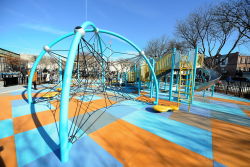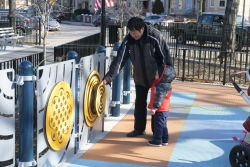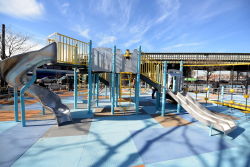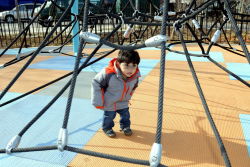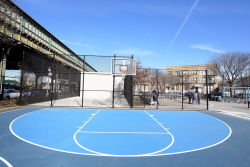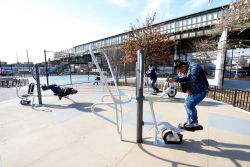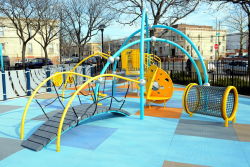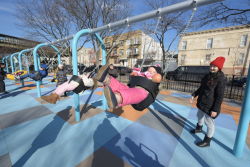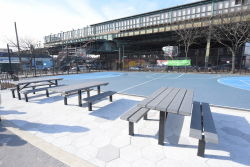Lt. Joseph Petrosino Park
Lieutenant Joseph Petrosino Park
What was here before?
This property was part of the many pieces of land that the prominent Lott family owned in Brooklyn. The patriarch, Engelbart Lott, arrived in New Amsterdam in 1652. His descendants prospered as farmers throughout Brooklyn until the late nineteenth century, when selling property became more lucrative than farming.
John Engelbart Lott owned this and surrounding property before his grandson, George E. Nostrand, inherited this plot. Despite the many row homes that sprung up along its border, this site remained undeveloped. Several dirt paths were worn into the ground from locals walking to the elevated subway station which opened in 1916, replacing ground-level tracks for the Brooklyn, Bath and Coney Island Railroad, an excursion railway to Coney Island completed in 1864.
How did this site become a park?
The City of New York purchased the land from Nostrand in 1929, and a playground opened on the site in 1935. The plan revolved around a central open play area. Distributed around its perimeter were handball courts, slides, swings, a wading pool, jungle gym, and recreation building.
The playground, by then known as Satellite Park, was renovated in 1993. It was redesigned again in 2019 through the Community Parks Initiative – a multi-faceted program to increase the accessibility and quality of parks throughout the five boroughs in an equitable manner. The park received new play equipment for various ages, planting beds, pathways, a spray shower, picnic tables, adult fitness equipment, and basketball courts.
Who is this park named for?
In 1999 the City Council passed a law to name the park for Lieutenant Giuseppe (Joseph) Petrosino, New York City's first Italian-American police detective. Petrosino was born in Padula, Italy and immigrated to the United States with his family in 1873. As a boy, he shined shoes outside Police Headquarters on Mulberry Street.
At the age of eighteen, he began his career in the public service with the Department of Sanitation (then under the jurisdiction of the Police Department). Fluent in many Italian dialects, Petrosino aided the police by working undercover as an informer in Little Italy. He joined the Police Department in 1883, and Police Commissioner Theodore Roosevelt personally promoted him to Sergeant of Detectives in 1895.
Petrosino was named lieutenant and given command of the new Italian Squad, a unit created to combat the crime organization known as the Black Hand. Under his leadership, several thousand arrests were made, and more than 500 offenders were sent to prison. Crimes against Italian-Americans dropped by 50 percent. Lt. Petrosino was assassinated while on assignment to Palermo, Sicily in 1909. He was the only New York police officer who was killed in the line of duty outside the United States.
When his body was returned to New York, thousands of mourners formed a funeral procession that marched from Little Italy in Manhattan to Calvary Cemetery in Queens. Another park named for Lt. Petrosino (in 1987) is in Little Italy, just north of the Renaissance Revival edifice at 240 Centre Street, which served as New York City Police Headquarters from 1910 to 1971.
Check out your park's Vital Signs
Clean & Safe
Green & Resilient
Empowered & Engaged Users
Share your feedback or learn more about how this park is part of a
Vital Park System

